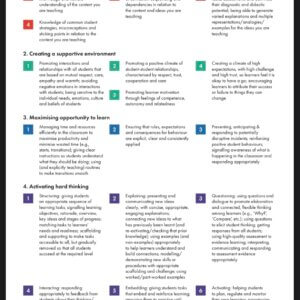Inclusive classrooms are essential for fostering an educational environment where all students, regardless of their abilities, backgrounds, or learning needs, can thrive. Creating such classrooms requires intentional planning, a commitment to diversity, and the implementation of effective strategies that cater to every student’s unique needs. This article explores the key components of inclusive classrooms and provides practical examples to illustrate their implementation.
Understanding Inclusive Education
Inclusive education is based on the principle that all students should have equal access to learning opportunities. This approach emphasizes the importance of accommodating diverse learning styles and ensuring that every student feels valued and supported. It involves modifying teaching methods, materials, and assessments to meet the varied needs of students.
Key Components of Inclusive Classrooms
-
Differentiated Instruction: This teaching approach involves tailoring instruction to meet the diverse needs of students. For example, in a lesson on fractions, a teacher might use visual aids, hands-on activities, and digital tools to cater to different learning styles. While some students might benefit from using fraction blocks to understand the concept, others might grasp it better through interactive software that provides instant feedback.
-
Universal Design for Learning (UDL): UDL is a framework that guides the design of learning experiences to be accessible to all students. It involves providing multiple means of representation, engagement, and expression. For instance, a teacher might offer reading materials in various formats, such as audio, large print, and digital text, to ensure that all students can access the content.
-
Collaborative Learning: Group activities and peer learning can be powerful tools in inclusive classrooms. By working in diverse groups, students learn to appreciate different perspectives and develop social skills. For example, a science project on ecosystems could involve students with different strengths and abilities working together, where one student might excel in research, another in creating visuals, and another in presenting findings.
-
Positive Classroom Environment: An inclusive classroom is characterized by a positive, respectful, and supportive atmosphere. Teachers play a crucial role in fostering this environment by setting clear expectations for behavior and promoting a culture of respect and empathy. For instance, a teacher might start each day with a morning meeting where students share their thoughts and feelings, reinforcing a sense of community.
-
Accessible Resources and Assistive Technology: Providing accessible resources and assistive technology is vital for supporting students with disabilities. For example, a student with dyslexia might benefit from using text-to-speech software, while a student with mobility issues might use adaptive tools to participate in classroom activities. Ensuring that these resources are readily available and integrated into daily instruction is key to fostering inclusivity.
Examples of Inclusive Practices
-
Flexible Seating Arrangements: Allowing students to choose their seating based on their comfort and learning preferences can enhance engagement and participation. For instance, some students might prefer sitting on bean bags or standing desks, while others might need quiet corners to focus better.
-
Multi-Sensory Instruction: Incorporating multi-sensory activities into lessons can help engage all learners. In a language arts class, a teacher might use a combination of auditory, visual, and kinesthetic activities to teach new vocabulary. Students could listen to a story, watch a video, and then act out the story using props.
-
Peer Mentoring Programs: Implementing peer mentoring programs can provide additional support to students who need it. For example, older students or those with advanced skills in a particular subject can mentor their peers, offering academic help and fostering positive relationships.
-
Inclusive Assessments: Using a variety of assessment methods can provide a more accurate picture of student learning. Instead of relying solely on written tests, teachers might use oral presentations, projects, and portfolios to assess student understanding. This approach allows students to demonstrate their knowledge in ways that suit their strengths.
Conclusion
Creating inclusive classrooms is an ongoing process that requires dedication, creativity, and a willingness to adapt. By embracing diversity and implementing inclusive practices, educators can create a learning environment where all students feel valued, supported, and capable of achieving their full potential. Inclusive education not only benefits students with diverse needs but also enriches the learning experience for all students, fostering a more equitable and just society.
Image from https://nafath.mada.org.qa/nafath-article/key-elements-of-inclusive-classroom-design/




Inclusive education is essential for creating a just, equitable, and thriving society. It benefits all students by providing diverse learning experiences, fostering empathy and understanding, and preparing them for a world that values and respects differences. As educators, policymakers, and communities, it is our responsibility to ensure that inclusive education becomes a reality for every child. Inclusive education, which ensures that all students, regardless of their abilities, disabilities, backgrounds, or learning needs, are provided with equitable opportunities to learn and thrive in a supportive environment, is indeed the need of the hour.